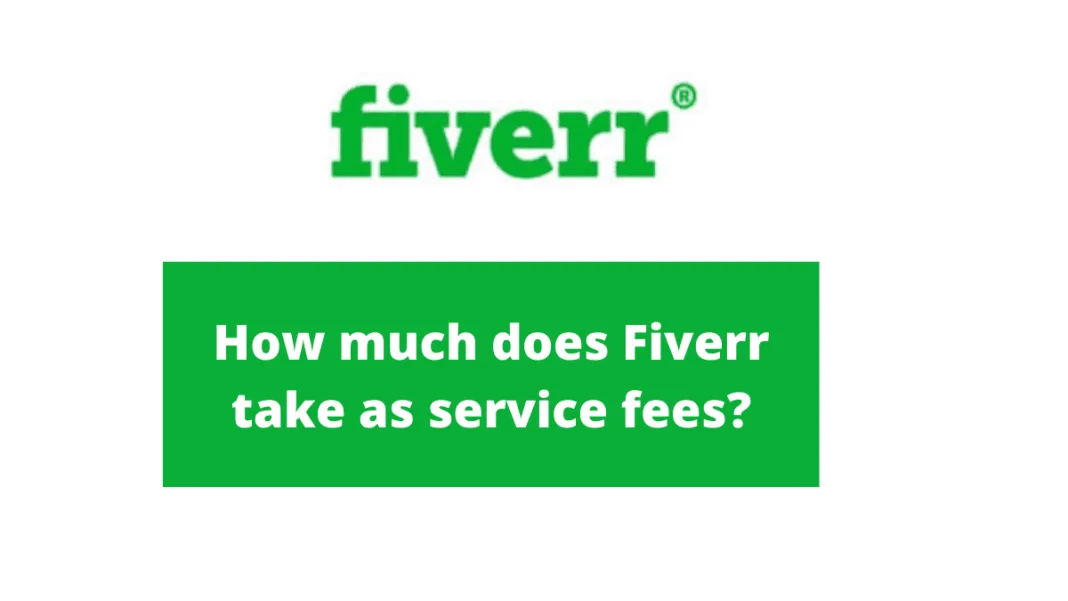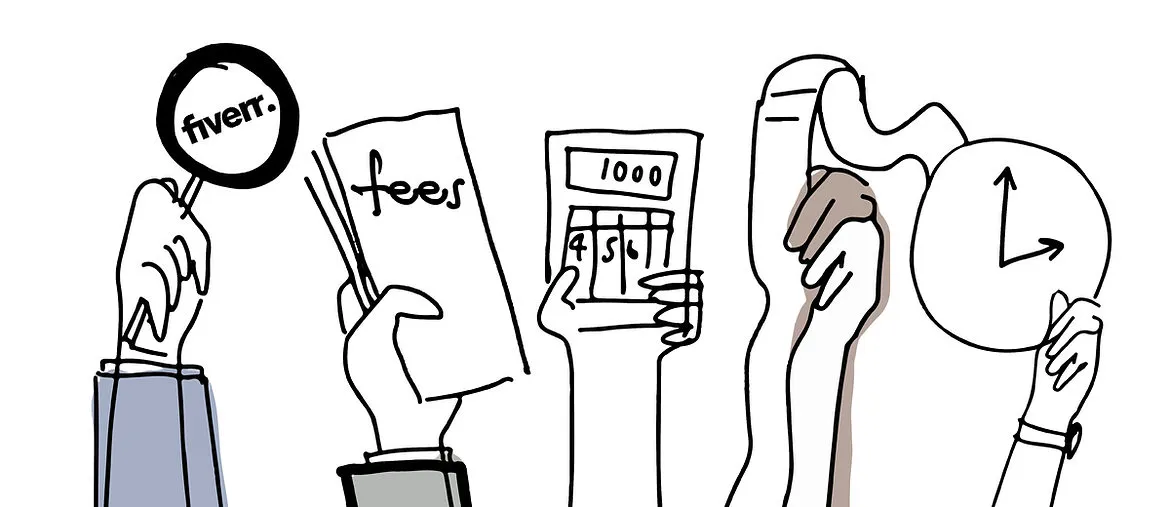Fiverr has become a household name for freelancers and clients alike, fundamentally changing how people approach hiring services online. If you've ever wondered, "Does Fiverr cost money?" you're not alone. Many users are curious about the platform’s pricing structure, and honestly, it can be a bit of a puzzle at first. In this post, we’ll help demystify Fiverr's costs and what you can expect when exploring this vast marketplace.
Overview of Fiverr Services

Fiverr is a global online marketplace that connects freelancers offering digital services with clients looking to buy those services. From creative fields to technical ones, the platform covers an extensive array of services. Here's a snapshot of what you can find on Fiverr:
- Graphic Design: Logo design, business cards, social media graphics, and more.
- Digital Marketing: SEO services, social media management, content marketing strategies.
- Writing and Translation: Copywriting, proofreading, translation services, and resume writing.
- Video and Animation: Explainer videos, animation, video editing, and voiceover work.
- Programming and Tech: Website development, app development, and tech support.
- Music and Audio: Music production, mixing, audio editing, and jingles.
- Business Services: Virtual assistant work, market research, and consulting.
One standout feature of Fiverr is its tiered service packages. Freelancers can offer different levels of service—basic, standard, and premium—allowing clients to choose what aligns best with their budget and needs. Most services start at just $5 (hence the name), but prices can go significantly higher based on the complexity and expertise required.
So, whether you’re a small business looking for a logo or an individual in need of a catchy jingle, Fiverr hosts a plethora of skilled professionals ready to bring your ideas to life. The variety of services makes it a unique platform for users looking to connect with talented freelancers from around the world.
Also Read This: How to Be a Pro on Fiverr
3. Pricing Models on Fiverr

When it comes to Fiverr, understanding their pricing models is crucial for both buyers and sellers. So, let’s break it down into simple terms! Fiverr mainly operates on a few straightforward pricing structures that cater to diverse needs.
1. Fixed Pricing: This is the most common model on Fiverr. Sellers set a fixed price for their gigs, which can range from $5 to several hundred dollars, depending on the service offered. This clarity makes it easy for buyers to know exactly what they’ll pay upfront. You can usually find gigs starting at the $5 mark, but premium services typically demand higher prices.
2. Tiered Pricing: Many sellers offer tiered packages, which means they provide multiple levels of service at different price points. For example, a basic package might include a simple service, while a premium package could offer additional features, faster delivery, or extra revisions. This model allows buyers to choose a package that best suits their budget and needs.
3. Custom Offers: Sometimes, buyers need something a bit different. Here’s where custom offers come into play. Buyers can request specific services, and sellers can provide tailored price quotes based on the project's requirements. This flexibility can foster negotiations and unique collaborations.
4. Add-Ons: Many sellers also offer additional services or enhancements for an extra cost. For example, if a graphic designer is creating a logo, they might charge extra for multiple revisions or a faster delivery time. This is a great way to customize your order according to your specific needs!
Also Read This: Niche Scraper vs. Sell the Trend: E-commerce Tool Face-Off
4. Factors Affecting the Cost on Fiverr
While Fiverr's pricing models provide structure, several factors influence the overall cost of services on the platform. Let’s take a closer look at what determines how much you’ll pay!
- Experience and Skill Level: More experienced sellers often charge higher prices. If someone has built a strong reputation, with numerous positive reviews and a proven track record, you can expect to pay a premium for their expertise.
- Service Type: The nature of the service also plays a significant role. For instance, complex services like website development usually cost more than simple tasks like social media graphics. Different services require varying levels of skill, time, and effort.
- Delivery Time: Many sellers offer expedited delivery for an additional fee. If you need a project done quickly, be prepared to pay more. It’s a case of “time is money,” and faster completion often comes at a premium!
- Market Demand: Just like any marketplace, prices can fluctuate based on demand. If a particular service is trending or sought after, you may find prices higher than usual. Sellers may adjust their rates during peak times or when they notice a surge in requests.
- Location: Surprisingly, a seller’s location can also influence pricing. Sellers from higher-cost-of-living areas might charge more compared to those in regions where the living costs are lower.
By understanding these factors, both buyers and sellers can navigate Fiverr's marketplace more effectively, ensuring fair pricing that meets their respective needs.
Curl error: Recv failure: Connection was reset
Also Read This: How to Pay for Fiverr in Nigeria
7. Comparing Fiverr with Other Freelance Platforms
When it comes to freelance platforms, Fiverr is just one player in a vast field. Each platform has its own unique pricing structure, functionality, and user experience. Let's delve into how Fiverr measures up against some of its competitors like Upwork, Freelancer, and Guru.
Fiverr: Fiverr operates on a gig-based system, where freelancers set fixed prices for specific services or "gigs." You can find services starting as low as $5, which is perfect for budget-conscious clients. However, the price can skyrocket based on complexity and add-ons.
Upwork: Upwork is more of a traditional freelance platform. Here, freelancers can bid on projects, and clients can set their budgets. While this gives some flexibility, it's less predictable in terms of cost. Hourly rates can vary dramatically based on experience and project scope.
Freelancer: Similar to Upwork, Freelancer offers a bidding system. However, they also have a "fixed-price" option where freelancers can propose services at set rates. Transaction fees can be higher here, which may trickle down to clients.
Guru: Guru combines the bidding approach with job postings. It has a flexible payment structure (hourly, fixed, or recurring). Again, none of these platforms generally offer prices as low as Fiverr's initial gigs.
In summary, if cost is a top priority, Fiverr's low starting prices make it the go-to option, while platforms like Upwork and Freelancer may be ideal for more extensive projects requiring long-term collaboration.
Also Read This: How to Remove Gettyimages Watermark from Images & Photos
8. Tips for Budgeting on Fiverr
Navigating Fiverr can be an inexpensive way to get work done, but a little budgeting can go a long way. Here are some practical tips to ensure you stay within your budget while reaping all the benefits Fiverr has to offer:
- Set a clear budget: Before you dive into Fiverr, determine how much you're willing to spend. This keeps you from impulsively purchasing gigs that could exceed your budget.
- Filter by price: Use Fiverr’s built-in filters to view gigs within your budget. This way, you won't come across overpriced services that might tempt you.
- Look for bundles: Some freelancers offer packages that provide more value for a slightly higher price. Consider these bundles if they meet your needs!
- Communicate: Don’t shy away from reaching out to freelancers before making a purchase. Ask if they can accommodate your budget or customize a gig for you.
- Check for reviews: It might be tempting to go for the cheapest option, but remember that quality matters. Read reviews and check the freelancer's previous work to ensure you're making wise investments.
- Keep an eye on add-ons: Some gigs come with optional upgrades. Be cautious about adding services that can unintentionally inflate costs.
By following these tips, you can maximize your Fiverr experience without blowing your budget. Happy freelancing!
Does Fiverr Cost Money? Understanding Fiverr's Pricing Structure
Fiverr is a popular online marketplace where freelancers offer their services to clients around the world. While it provides a convenient platform for both buyers and sellers, many users often wonder, "Does Fiverr cost money?" Understanding Fiverr's pricing structure is crucial for both those looking to purchase services and those who are considering selling on the platform.
Here’s a breakdown of Fiverr's pricing model:
- Service Prices: Freelancers on Fiverr set their own prices, which can range from as low as $5 to thousands of dollars depending on the complexity of the service. Common categories include graphic design, writing, programming, and marketing.
- Service Tiers: Many freelancers offer multiple tiers or packages, allowing clients to choose basic, standard, or premium options, often leading to different price points.
- Fiverr’s Service Fee: Fiverr imposes a service fee on transactions. For buyers, this fee typically ranges from $2 to 20% of the purchase price, depending on the total amount of the order.
- Withdrawal Fees: If you are a seller earning money on Fiverr, they apply withdrawal fees when transferring your earnings to your bank account or payment service provider.
Fiverr also offers additional features, such as gig extras, where sellers can charge more for added services. These different elements contribute to the overall cost of using Fiverr, making it important for users to carefully review all price details before committing to a purchase or listing a service.
Key Takeaway: While Fiverr does require payments, the total cost varies based on the services you choose and additional fees associated with transactions. Always be aware of the pricing details to make informed financial decisions.
In conclusion, Fiverr does cost money, and understanding its intricate pricing structure ensures users can navigate the platform effectively, maximizing their investment whether they are buying services or selling them.



